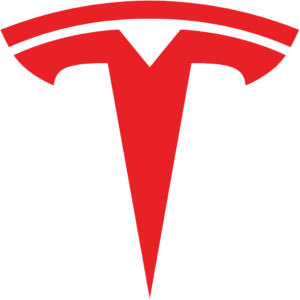There are two general types of hybrid ICE/electric vehicles, with many sub-categories, namely:
- Non plug-in, where the vehicle’s drive (or “traction”) battery is charged by the vehicle’s gasoline or diesel engine. The engine can be a small one not designed to drive the vehicle but only meant to charge the drive battery, or it can be the normal engine found in an OEM’s “twin” non-hybrid model. Depending on the vehicle’s design, the vehicle’s engine may have to switch on above a certain speed to charge a rapidly depleting drive battery.
- Plug-in hybrid electric vehicle (PHEV). Here the vehicle is powered by a traditional gasoline or diesel engine but the option also exists to use only the vehicle’s electric propulsion system where the vehicle’s traction motor is powered by a separate high voltage battery that is charged similarly to a pure electric vehicle, i.e., with a charging cable. These vehicles generally have a very limited battery powered range.
Consider hybrid electrical vehicles from four vantagepoints as compared to a pure battery powered electric vehicle – the vehicle itself, the owner’s, the owner’s location, and the manufacturer or auto OEM.
The vehicle: Hybrid electric vehicles are by definition more complex in both hardware and software, more expensive due to the extra hybrid components and engineering, heavier, and because of their small drive batteries have a very limited range, usually less than 40 miles on battery power. Generally, the “hybrid” battery and motor are just “tacked on” to an OEM’s conventional ICE powered vehicle.
The owner’s viewpoint: Hybrid electrics if used as they are designed and intended can result in better fuel economy and a longer combined range. However, studies have shown that many if not most hybrid owners seldom or never charge their vehicles, negating any advantage of the hybrid vehicle to the owner. One study of company-provided fleet hybrids in Europe found many hybrids returned at the end of their lease period with the charging cables still in their original packing envelopes.
The owner’s location: The one place properly operated hybrid vehicles can be an advantage to both ICE and pure electric vehicles is in extremely rural environments where there is a lack of a sufficient charging infrastructure. In such environments a pure battery electric vehicle may be out of the question for any trips exceeding the vehicle’s range based on a full home charge.
The OEM manufacturer: There is no longer any legitimate reason for an auto OEM to be designing and producing hybrid electric vehicles. At best, the hybrid is an interim measure between ICE and pure battery powered electric vehicles. Nonetheless OEMs have discovered that hybrids can be a considerable benefit to them, especially because most of these OEMs are five years or more late to the pure electric vehicle marketplace, or have an insufficient supply of EV batteries, or both. Furthermore, because their fleets are still largely ICE powered, these OEMs need a way to comply with increasingly stringent auto emission regulations.
For decades auto OEMs have had to comply with emission control laws designed to reduce the output of primarily nitrous oxide and CO2 emissions from gasoline and diesel powered vehicles, autos in particular. Recently, with accumulating and alarming evidence of global warming, such regulations have grown increasingly stringent, particularly in Europe.
As we noted in a recent article, many countries in Europe have totally banned the sale of gas and diesel powered vehicles by specific dates – usually in the 2025 to 2040 range. Furthermore, many European major cities have banned emission emitting vehicles from parts of their cities. In China, over a dozen major cities ban emission producing vehicles on alternate days.
In the US, California just passed a law banning the sale of internal combustion powered cars by 2035. Other states such as New Jersey and Nevada are considering following California’s lead in this matter.
Most regulatory agencies measure auto emissions on a fleet average basis, the fleet being comprised of all the light vehicles a manufacturer produces. Most OEMs, being considerably behind the eight ball, have figured out a way to game the regulatory systems and take advantage of loopholes that are in the regulations either because of a lack of legislators’ knowledge when the regulations were written, or out of willful intent by legislators to provide loopholes to desperate and politically connected auto OEMs and their lobbyists.
In Europe particularly, auto OEMs are rushing PHEVs into the market as compliance cars. Stimulated by generous European governments’ incentives, PHEV sales are currently at an all-time high in Europe much to auto OEMs’ delight! Under the current European CO2 laws, these PHEVs count toward an OEM’s CO2 emission credits whether or not their owners ever use their vehicle’s traction battery power! Yet when operated only as an ICE powered vehicle these vehicles’ CO2 emissions far exceed the vehicles’ emissions when their hybrid capabilities are fully utilized. This clearly evades the intent of the CO2 regulations and rewards auto OEMs pushing obsolete technology because they can’t or won’t make the switch to pure battery powered electric vehicles.
To obtain the most benefits for both manufacturer and customer, OEMs need to design a completely new platform dedicated to an EV. This platform will take advantage of better packaging of critical components for customer comfort and value, as well as significantly reduce the cost of design and production for a manufacturer. VW has done this with its MEB platform that is the basis of its new ID.3 and ID.4 vehicles.
The European Union’s regulators are being urged to make two possible changes to their current CO2 emission laws. The first would be to ban the use of hybrids as a part of company car plans. As I have noted previously, such popular car plans account for 60% of car sales in Europe. LeasePlan, a European automotive leasing company with over 1.9 million vehicles on the road, is urging its member companies not to allow hybrids in their company car programs. A second more drastic but also more beneficial change would be to simply ban the sale of all hybrids starting in 2024 for example. Either of these alternatives would go a long way toward motivating global auto manufacturers that sell into the European market to fully electrify their vehicle offerings.
Tesla’s Model 3 is already the top selling fully electric vehicle in Europe, as it also is in China! When Tesla’s Model Y’s start rolling out of its new Giga Berlin factory around next May (2021), European consumers will forget hybrids. The traditional German luxury vehicle OEMs – BMW, Mercedes, Audi, and Porsche – will see their ICE powered vehicle sales plummet even further and face an existential crisis. Even if they have the pure electric vehicles designed, they are not likely to have enough batteries to sell very many of them. In addition, the batteries they do manage to acquire will not have the range or low cost of Tesla’s current or future 4680-based battery “packs”. The German government has just approved an additional $2.3 billion of aid to those manufacturers to help them make the transition to pure EVs. Too little, too late, IMO.
All this just as VW approved a 2.4 billion Euro (about $2.75 billion) dividend for its FY ending in September. Say what?!!
Image courtesy of Pixabay
Your feedback in the form of comments or suggestions are welcome in the comment window. Thank you for following my blogs on this site and for participating in my blogging community.





